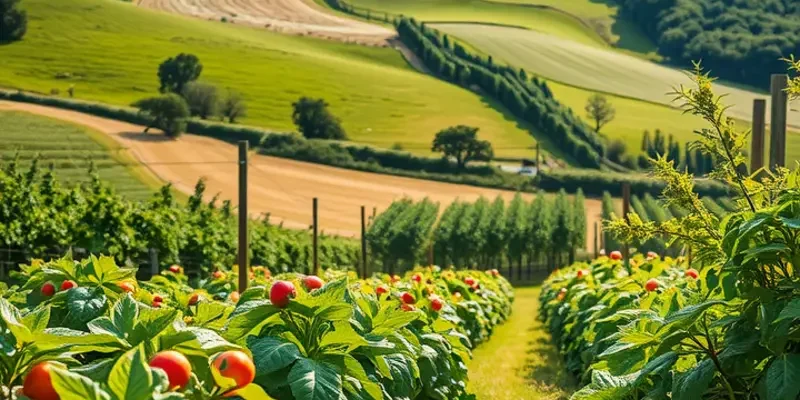Reusable wraps offer an excellent solution for storing food while minimizing waste. Made from sustainable materials, they are not only environmentally friendly but also highly effective in keeping food fresh. However, using them safely requires knowing how to clean, care for, and store these wraps properly. This guide will share practical tips and tricks to help you get the most out of your reusable wraps for food storage.
Choosing the Right Reusable Wraps

When it comes to preserving food sustainably, selecting the right reusable wrap is crucial. Beeswax, silicone, and cloth wraps are popular choices, each offering unique benefits. To ensure that your food remains safe and lasts longer, prioritize materials known for their durability and non-toxicity.
Beeswax wraps are a favorite among eco-enthusiasts for their natural ingredients. Typically made from cotton infused with beeswax, tree resin, and jojoba oil, they create a breathable seal for food. Beeswax wraps are perfect for dry foods like bread, cheese, or nuts; however, they aren’t suitable for raw meat. Beyond breathability, beeswax wraps are compostable and provide an all-natural alternative to plastic.
Silicone wraps, made from food-grade silicone, provide a flexible and reusable option. Unlike beeswax wraps, silicone is suitable for both moist and dry foods, including cut fruits and vegetables. Opt for BPA-free and food-safe certifications when choosing these wraps. Silicone can withstand temperature extremes, making it ideal for freezer storage or reheating leftovers, but avoid using it when cooking or broiling.
Cloth wraps, often made from organic cotton, offer versatility as well. While they lack the natural adhesive quality of beeswax or the stretch of silicone, they can be used with containers or tied into bundles. Cloth wraps excel for storing baked goods or covering bowls. Ensure the cloth is untreated and washed regularly to maintain hygiene and durability.
When investing in reusable wraps, look for eco-certifications such as Global Organic Textile Standard (GOTS) or similar labels that guarantee environmentally friendly practices. Keep in mind the intended use of each type of wrap: beeswax for dry foods, silicone for both dry and moist conditions, and cloth primarily for dry goods.
Size is another critical consideration. Picking size variations helps you avoid waste while ensuring accurate coverage. Smaller wraps work well for wrapping half an avocado or a piece of cheese. Larger wraps, on the other hand, can cover fruits or sandwiches. A variety of sizes enhances efficiency and maximizes usability without excess waste.
For more on making smart choices in eco-friendly kitchen practices, visit this guide on eco-smart kitchen storage. It offers insights into creating a truly sustainable kitchen environment by going beyond wraps.
By carefully selecting materials, considering intended uses, and choosing appropriate sizes, you can make food preservation both eco-friendly and effective. Properly managed reusable wraps not only protect your food but also support a greener lifestyle.
Maintaining and Storing Your Wraps Safely

To ensure the longevity and effectiveness of your reusable wraps, proper maintenance and storage are essential. Start by giving them a thorough clean after each use. Hand washing is the best approach because it prevents unnecessary wear. Use cool water paired with mild soap; this gentle mixture helps remove residues without compromising the material’s integrity. Avoid hot water as it can cause the wraps to lose their shape or stickiness.
Remember to handle them gently. Refrain from using harsh scrubbers or any abrasive cleaning tools. These can cause abrasions or tears, significantly reducing their life span. After washing, let the wraps air dry completely. Laying them flat is ideal, as hanging can sometimes distort the edges or cause unnecessary stretching.
Proper storage is equally important. Store your wraps flat in a cool, dry place. Excessive heat and moisture can lead to mold growth or material degradation. Direct sunlight is especially harmful, as UV rays can lead to premature deterioration, affecting the wrap’s color and clinging ability.
Over time, you might notice your wraps losing a bit of their stickiness. This is a natural process, especially with regular use. If they start to slide off surfaces or don’t adhere as firmly, it could be time for a replacement. Additionally, inspect them for signs of damage, like tears or deep stains that don’t wash out. Such wear indicates the wraps have served their purpose and should be replaced to ensure safe food preservation.
Learning to recognize the end of their lifecycle not only helps maintain effective food storage but also reduces waste. By knowing when to recycle or repurpose these wraps, you align with eco-friendly practices. For more tips and techniques on creating a sustainable kitchen environment, consider exploring other resources that focus on eco-smart kitchen storage. This can provide additional insights into integrating sustainability seamlessly into your daily life. Following these guidelines ensures your reusable wraps remain a reliable part of your kitchen toolkit, safeguarding freshness while supporting an eco-friendly lifestyle.
Final words
Choosing reusable wraps can significantly reduce plastic waste in your kitchen while maintaining food freshness. By selecting the right materials, cleaning, and storing them correctly, you can deepen your commitment to sustainability. Investing time in learning these practices enhances both food safety and your environmental impact. With these tips, you can confidently embrace reusable wraps as a staple in your food management plan.







